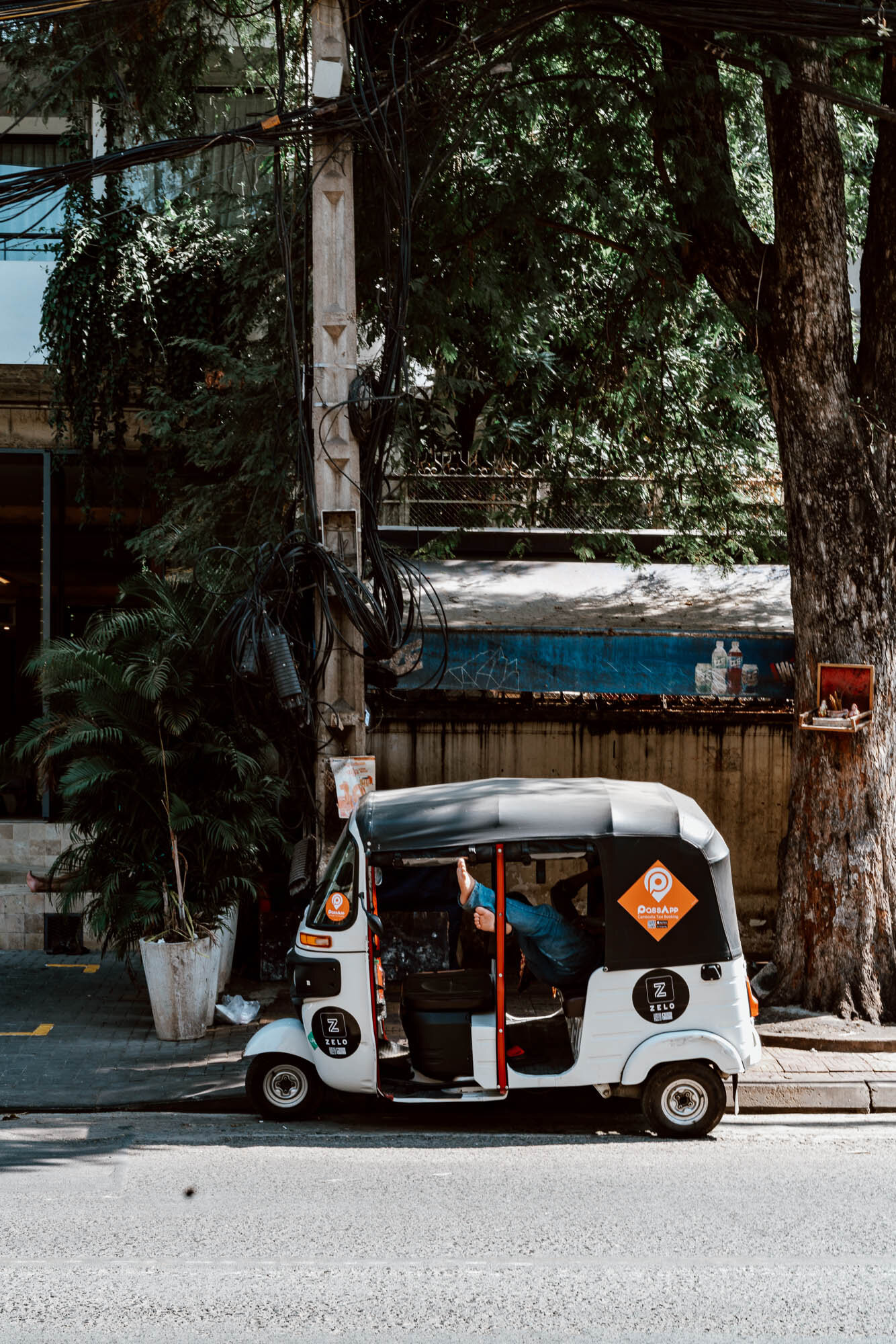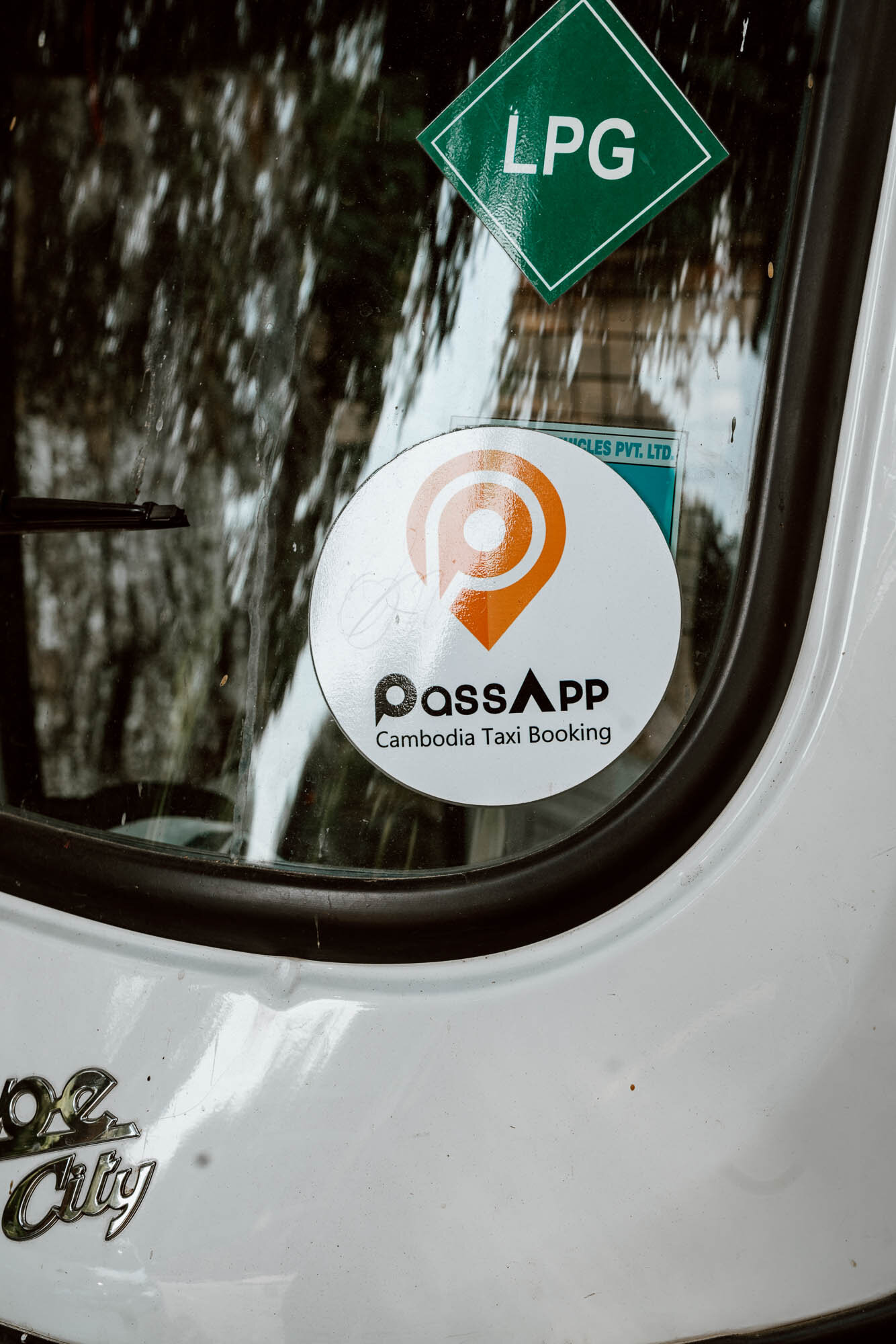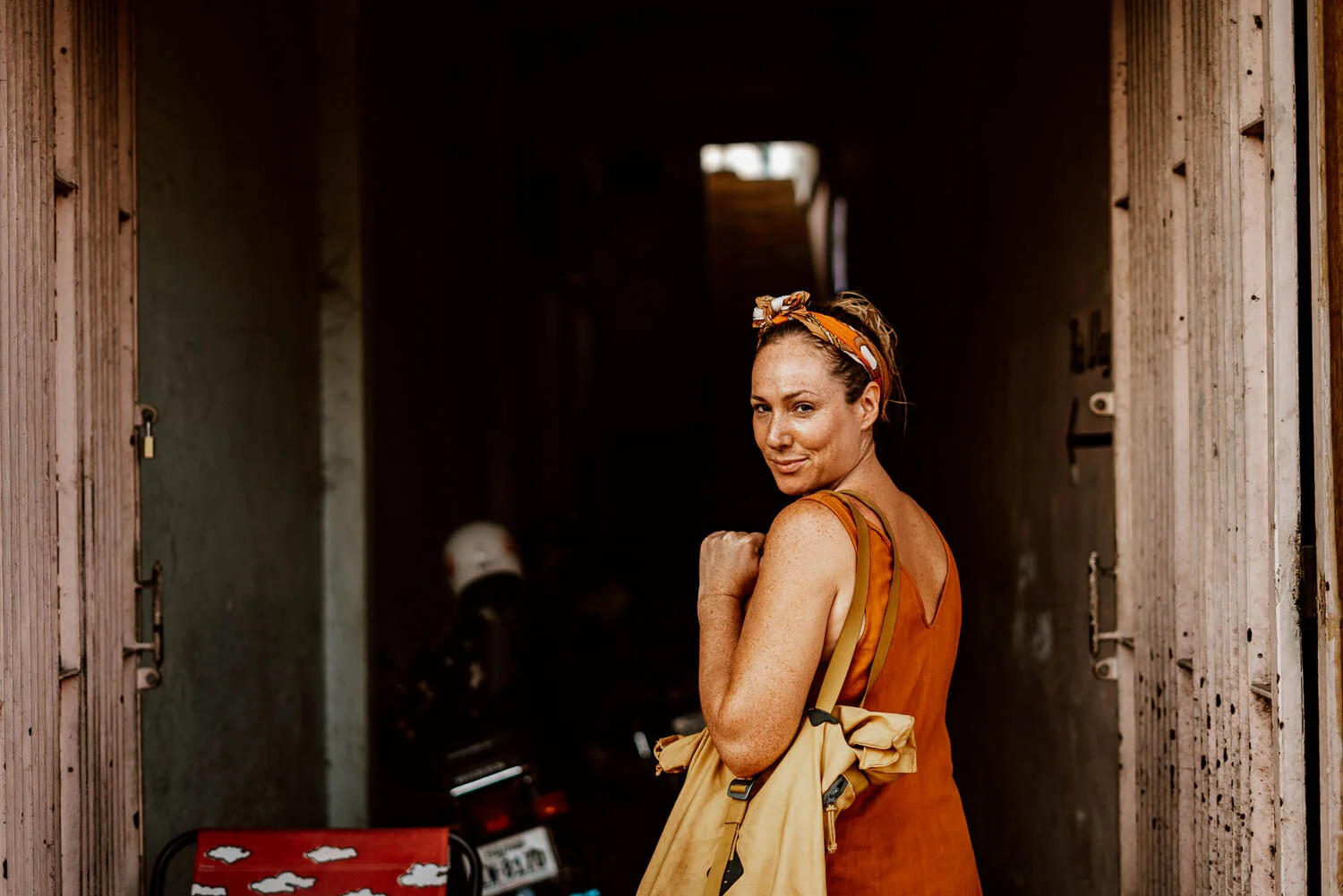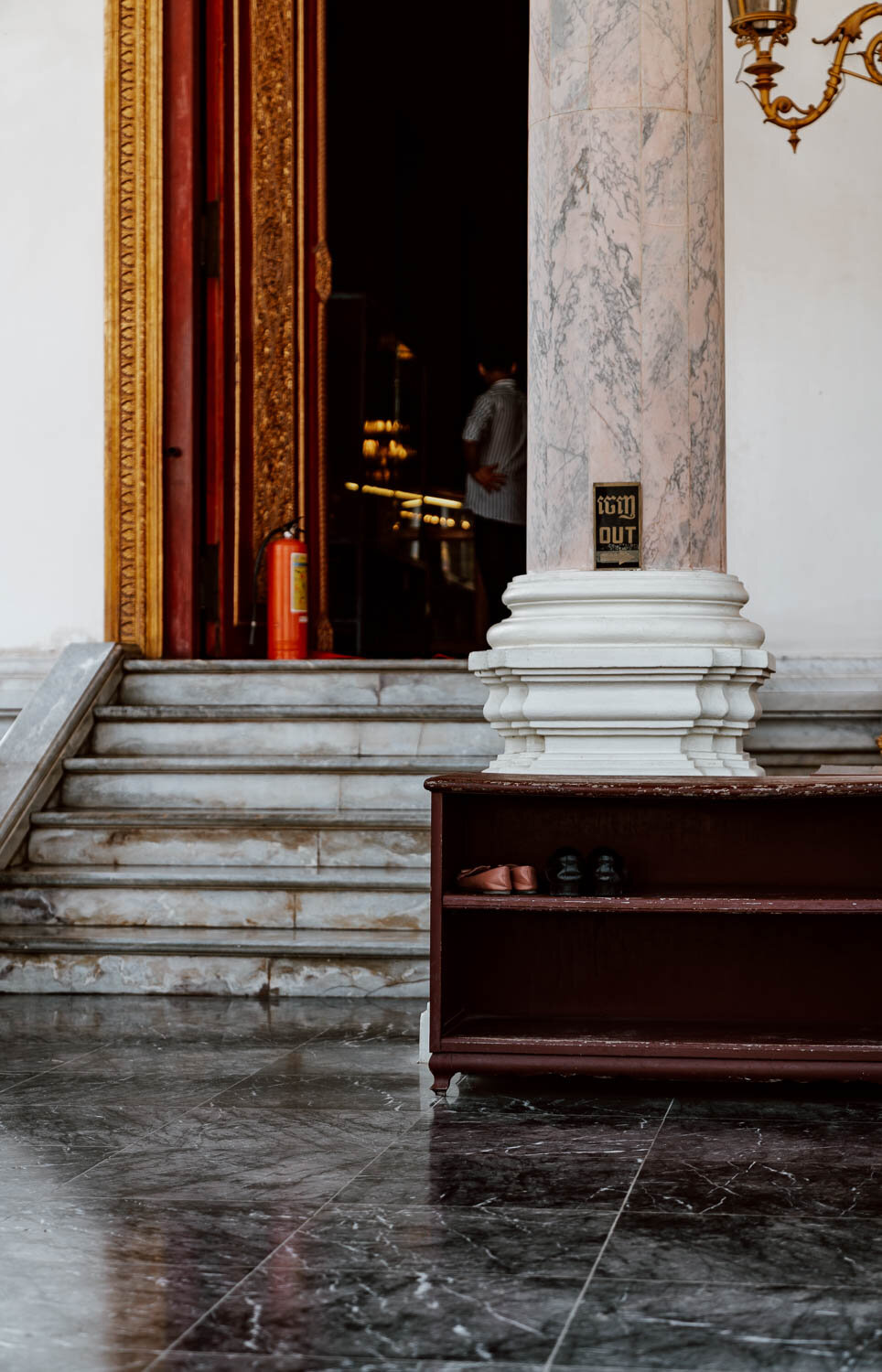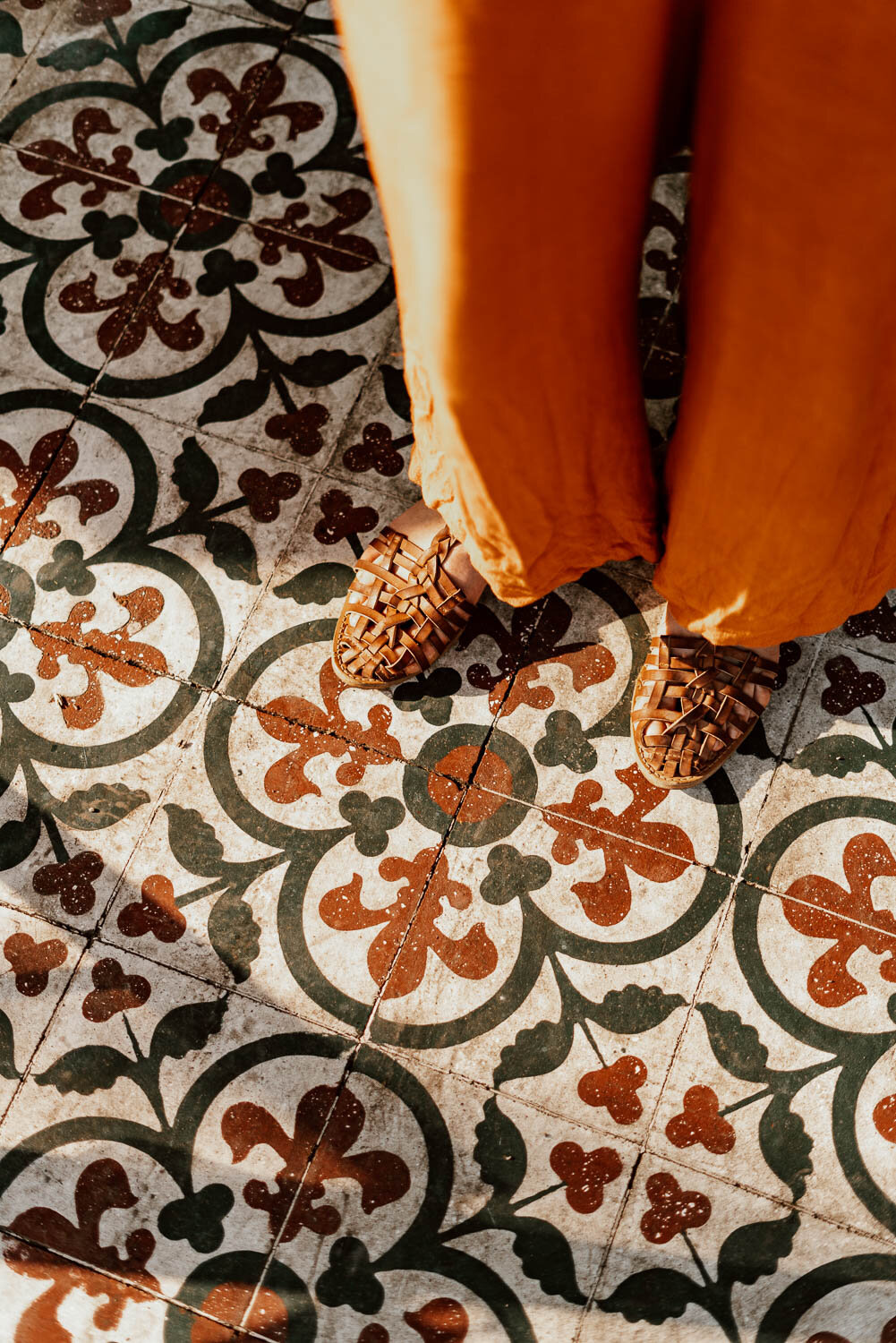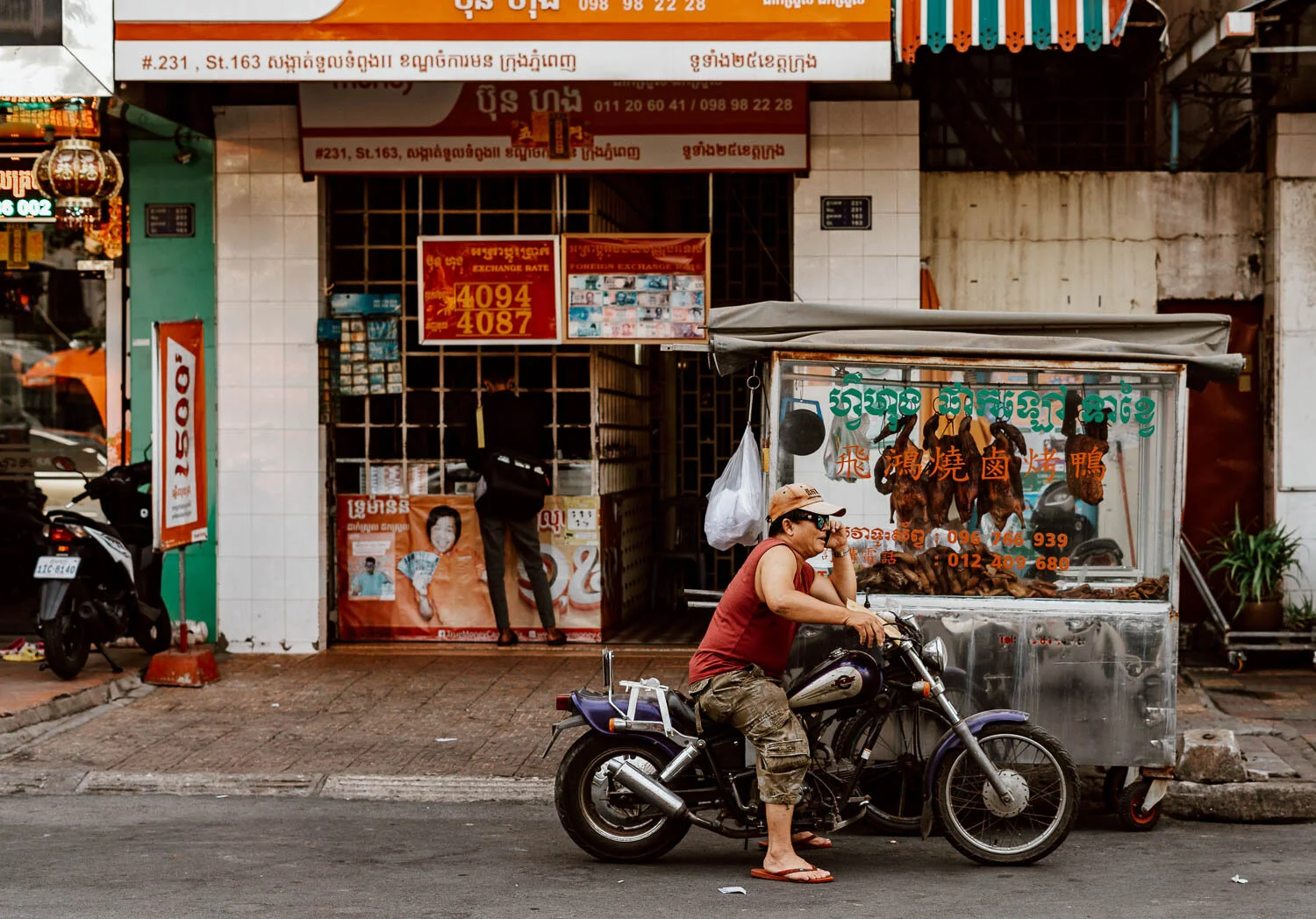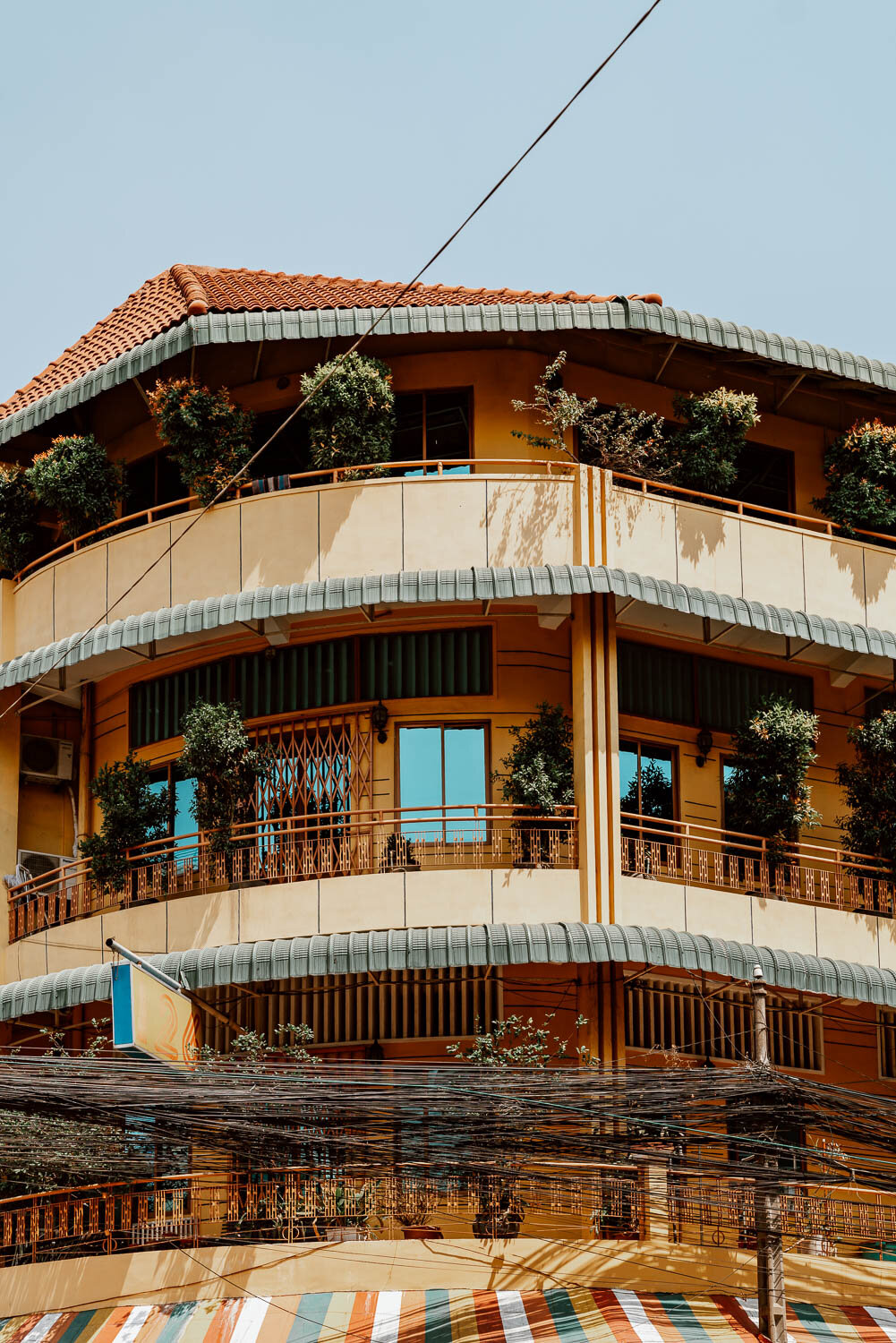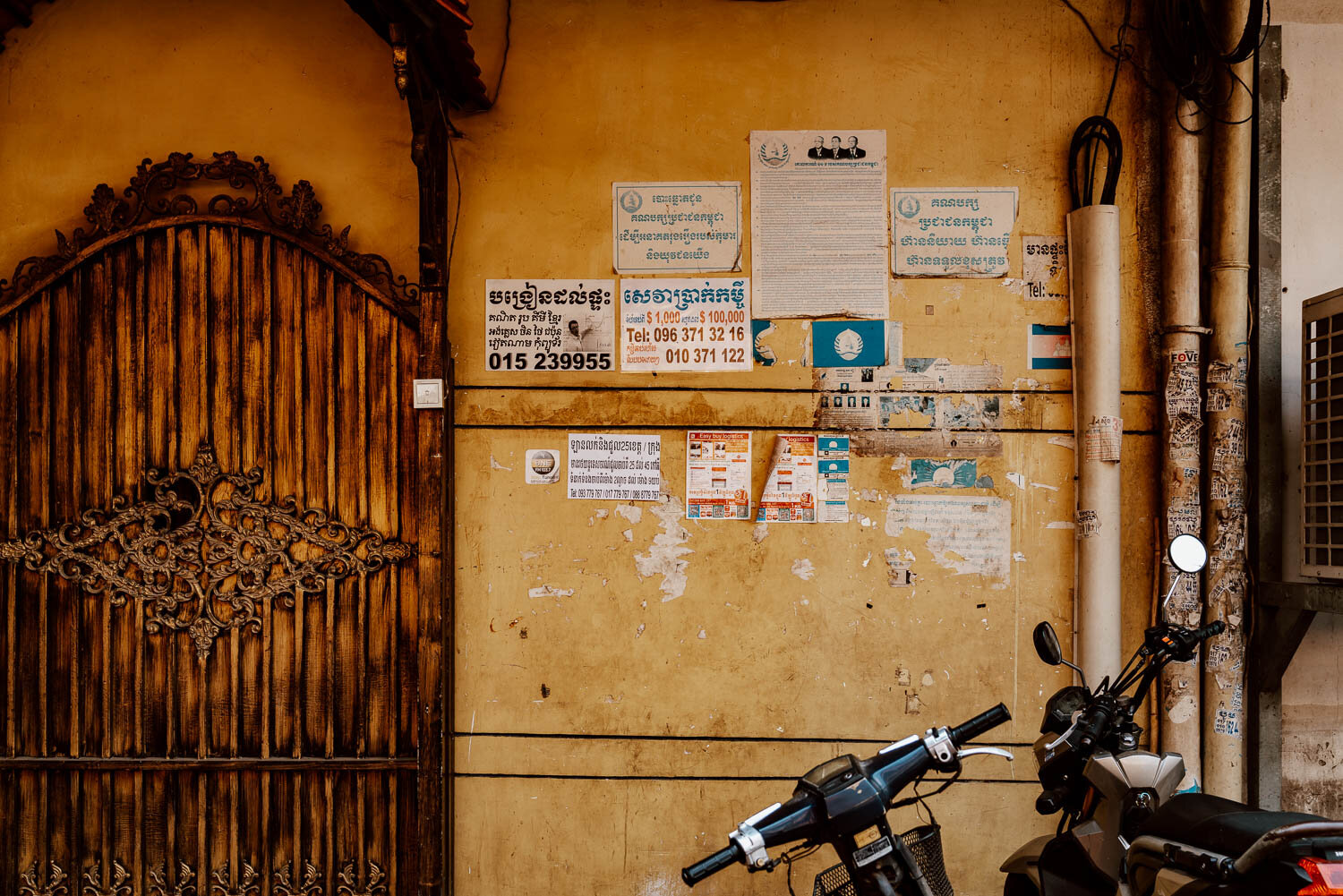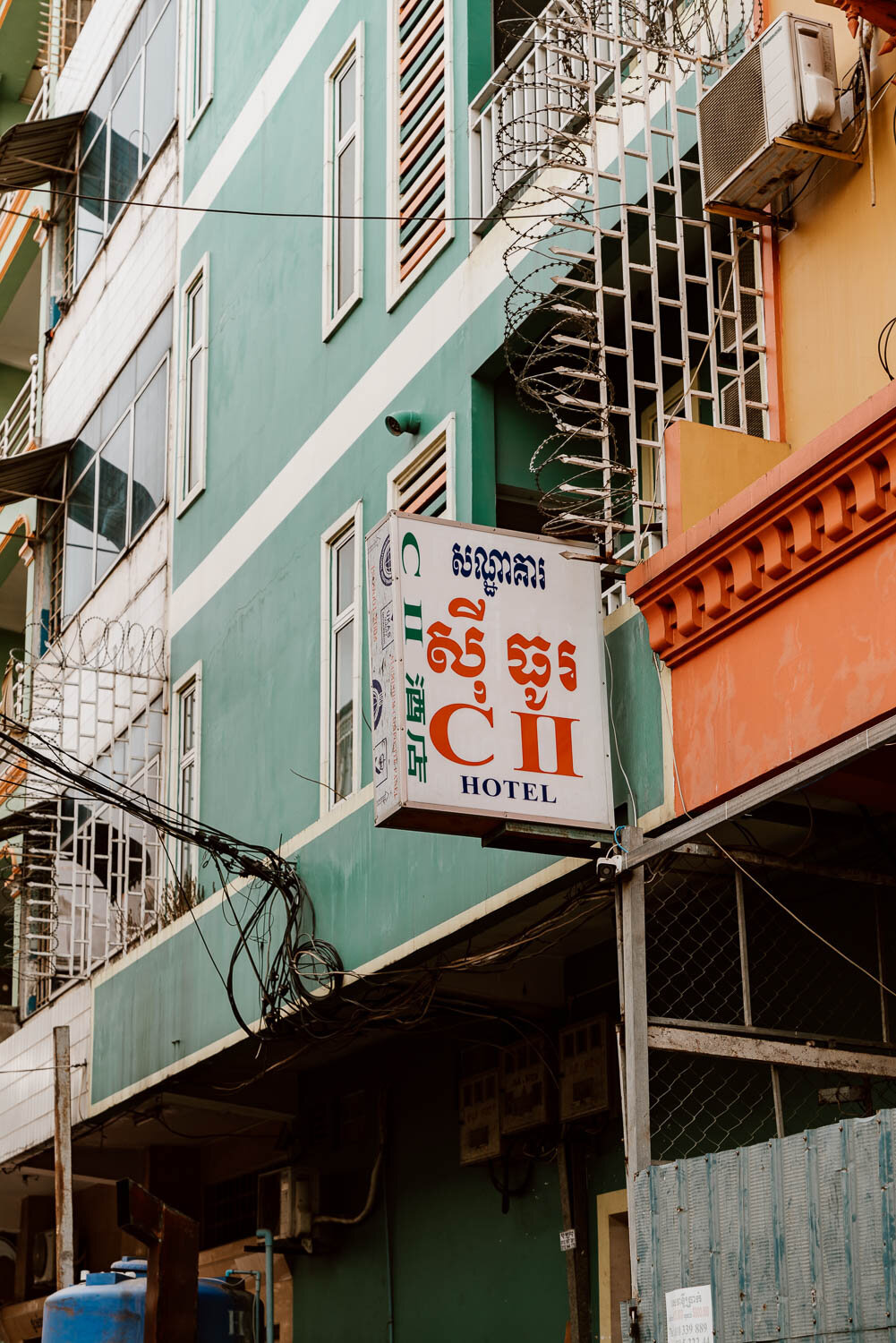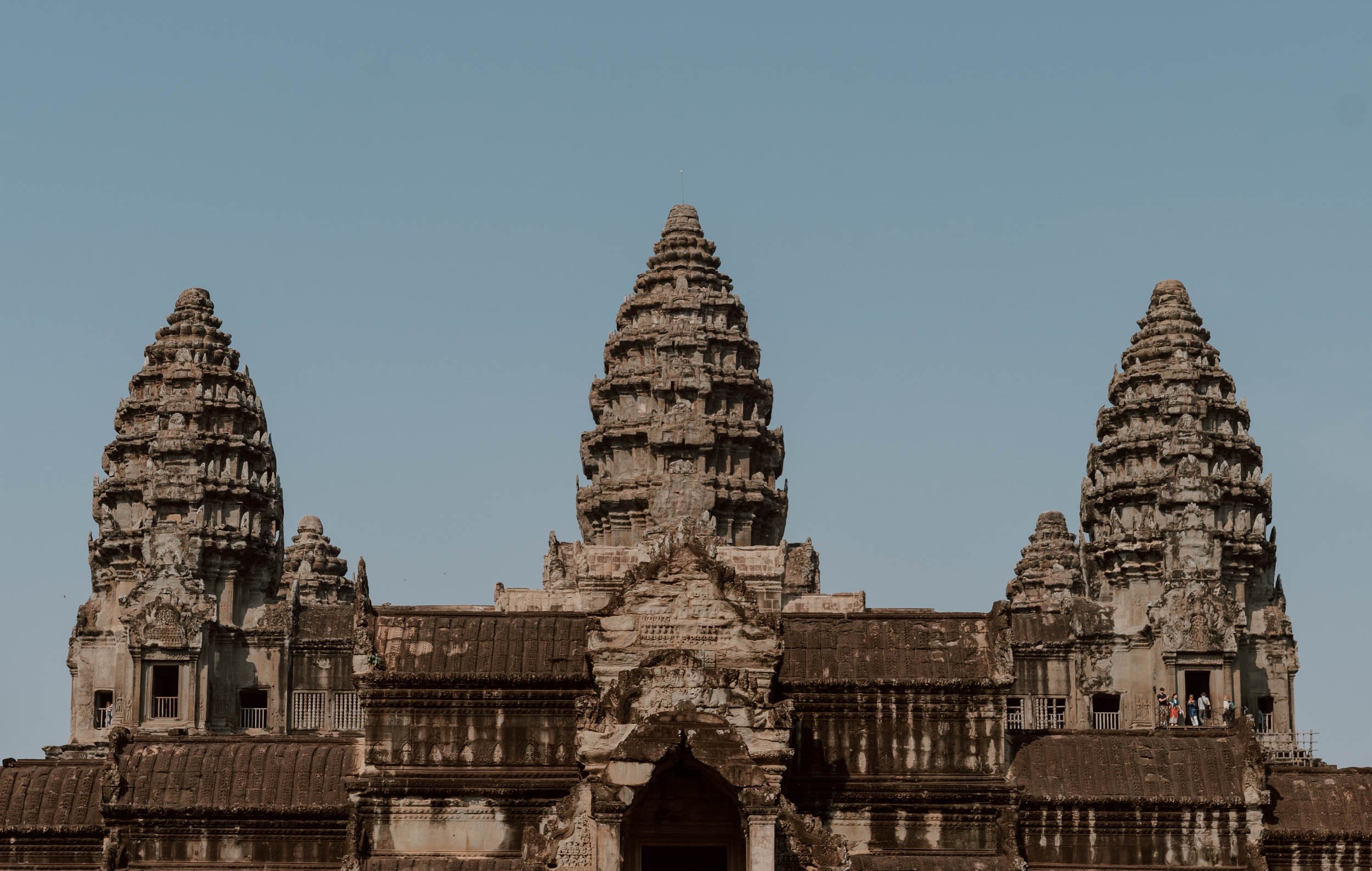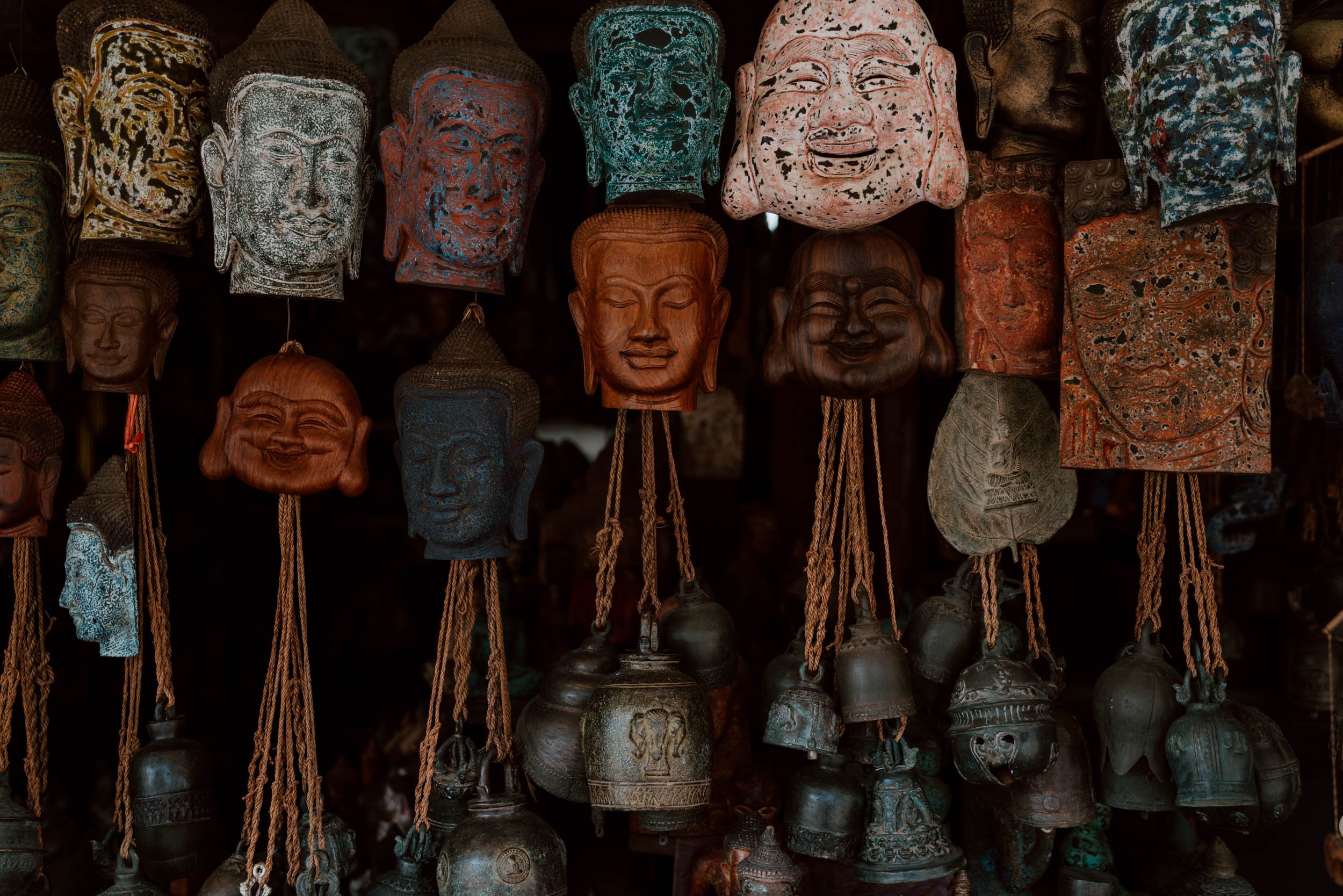In this short Phnom Penh travel guide we cover nine essential things to know to make your trip that little easier.
Updated November 2023
Phnom Penh, the seemingly unpronounceable capital city, will mark the first stop for most visitors to Cambodia. For us, it’s also a much better entry point to get crucial perspectives on Cambodia’s past and present than Siem Reap in the northwest.
Across our three sojourns to the city this year, plus Andrew's visit way back when in 2008, we have learned a few essential little details that every travellers should know before they visit Phnom Penh.
Some will make your trip preparation easier, some will prepare you for the realities, and some will just help you navigate the city a little easier in the sunshine - but all of them will improve your experience.
Here we go - our essential Phnom Penh travel tips!
· · ·
You're Saying it Wrong
Pinom Pen. Fenom Fenh. Finom Ping. Nom pen. Fnom Fenh. Pom Pen. Feenom pung. Naaam pung.
Which variation of Phnom Penh are you currently using to get it all wrong?
Don't worry - it's nigh on impossible to work it out until you hear someone local pronounce it or tell you how to get your lips smacking around the 'Ps'.
So, let yourself feel smug at the airport check-in desk, we can tell you that the way you should pronounce Phnom Penh properly (a nice little tongue twister there) is as follows:
Pinom Peng.
You could also get by with Pa-nom Pen. It's quite a soft P at the start, but you DEFINITELY have to it. However, Bun, our local guide from the countryside outside the city, definitely, had a more nasal 'g' at the end of Penh (like the 'ng' at the end of 'sing'). If confused still, then this guy hits it at 2.00 into the video!
Little factoid for you - Phnom means 'hill' in Khmer (the local language), and the city's full name translates as "the hill of the lady Penh".
There Are 5 Ways To Travel From The Airport
The compact yet modern Phnom Penh International Airport handled around 5.5 million passengers in 2019, and acts as the main gateway to the country for international tourists.
It's situated just under 10 kms from the city centre, and you'll never be more than an hour away (unless the traffic is really bad) once you've got your visa and luggage sorted.
You can choose from a taxi, tuk-tuk, train, moto, or public bus to bring you into the city, with prices ranging from $2.5 - $18 for the ride.
We've shared all the necessary information for you on the individual transport costs, journey times, and issues to be aware of in this post ‘How To Get From Phnom Penh Airport to the City’.
There Is A Real Bag Snatch Problem
We're experienced travellers, and so aren't here to try and stoke your paranoia or sell you some crappy piece of travel safety kit.
So, please take us seriously when say that an essential Phnom Penh travel tip is understanding that this city has a real and serious snatch problem for travellers.
Now, we don't mean snatch in the sense that the loves Guy Ritchie movies or, well, the other sort of snatch (actually there is a problem with that, but we'll explain later).
We mean that tourists, happily wandering the street back to their hostel or hotel, will stop to take a photo or have their bag loosely dangling off their shoulder. Everything will be fine and dandy, before a split-second blur of a revved motorbike, a jerk from the side, and your phone / bag / camera is gone before you even know it. Usually it's two people on the bike, and often they will come out of nowhere. It's more common in the evening, but also occurs during the day.
These guys (and girls) are quick, efficient, and know exactly what they're doing.
Again, this is not a paranoia statement. In the two hostels we've stayed at in Phnom Penh, each has had many signs up advising guests to take it seriously and act accordingly. As we walked back from the Sihanoukville bus stop after dark, old fellas would point to our mobile phone mapping the way and remind us to keep it even closer. Wherever we were out photographing the streets (taking the necessary precautions), a friendly local would remind us to take care of them.
According to a new report, in the first six months of 2022, Phnom Penh municipal police arrested 101 suspects in 75 incidences of bag snatching on the city’s streets - which would be a fraction relative to the actual number of instances.
Being fully aware of this issue is the first step to avoiding it happening during your own visit. However, there are a few sensible changes to behaviour you should observe whilst in Phnom Penh to reduce the opportunity for a motorbike snatch (as they say in Colombia, don't give anyone a papaya!).
Minimise the valuables you take out, and never take out your passport
Avoid walking on the road side of the pavement, instead walk on the 'inside'
If you need to use your phone for maps etc, stop and move to a space where you're not vulnerable and focused only on the phone
Keep your phone and bag close to you at all times
Pay attention to what's going on around you
Choose a small daypack, and carry it in a way which reduces risk (i.e. on both shoulders, on the shoulder facing away from the road, across your chest). This applies even when you're crossing a busy or empty road
We have never used a money belt, instead reducing and separating what we take out when exploring and photographing, with cash being stuffed inside various pockets rather than all in one wallet
When taking photos, with your phone or camera, think before you click and put yourself in a less vulnerable position (i.e. away from the road-facing edge of the pavement). Don't leave your camera dangling off one shoulder, strap it across
If you’re in a tuk-tuk, especially the larger open-sided ones, don't sit in a way which leaves your bag vulnerable. When we had all our luggage on the way back to Phnom Penh Airport, we actually tied them together and placed our feet through the backstraps - it may seem like overkill, but it ain't. Don't just put your bag on the seat opposite or seat next to you! There have been incidents of tuk-tuk thefts on the way from the airport, so if this is a concern go for the official taxi instead
Take a tuk-tuk back to your hostel / hotel after dark, rather than walking
When you're in a tuk-tuk, don't be focussed on your phone or hold it out to take photos of what you see along the way. If you're using it, have a firm grip and hold it in a way which makes it difficult to see or snatch. When not using it, put it in your pocket.
Other travellers have told us that resisting the snatch from the motorbike (i.e. trying to grab your bag) can cause serious injury to your arm or shoulder and even drag victims along the road - so don't resist, let go of whatever they're trying to take.
Thankfully, as we were aware of the issue and took all the above necessary steps to safeguard, we did not have anything stolen or targetted - we hope the same goes for you.
After all, starting or ending your Cambodia trip with a bag snatch would be utter shite - and we don't all have bodyguards to take on the mugger and get our purses back on the streets of Phnom Penh like Princess Eugienie did…
Lastly, as for any trip, make sure you have good travel insurance before you travel just in case anything does get nicked along the way. Personally, we have used True Traveller for the last three years (but we have specialist photographer's insurance for our cameras), and recommend reading this post before you buy your next policy - 13 Common Mistakes To Avoid With Travel Insurance.
It's Usually Hot, But There’s A Dress Code To Respect
There are two seasons in Cambodia, dry (December - April) and wet (May - November): being at very low altitude, weather patterns follow this pattern very closely.
The best weather months to visit the city are late November to mid-February, where it will be reliably hot but the humidity won't take it out of you. These months do however, unsurprisingly, coincide with the peak tourist season in the country. We spent our time in Phnom Penh in February and March, and can attest that it was pretty perfect but still not overly crowded.
In March to early June, the temperature within the built-up and busy urban environment becomes much less enjoyable, with highs of 40C and stifling humidity. In the wet season, many days will still be sunshine-filled and dry but brief, heavy bouts of rain are likely.
In our experience, the afternoon heat and humidity of the cooler dry season was wonderful but also exhausting. We love to explore a new place on foot primarily, but it simply wasn't possible to do this for hours at a time (yay to iced-coffee and beer breaks) or for large distances. Many of the best things to do in Phnom Penh are within close proximity of each other, but we'd recommend just hopping into a tuk-tuk if you have to go somewhere that's more than 10-15 minutes walk away during the afternoon (i.e. for example, from the riverside to sunset with a cocktail over the Russian Market).
Tuk-tuks are the most common and accessible public transport within Phnom Penh, and any ride within the central areas will be in the range of $2 - $5 (depending on distance, passengers, and negotiations). For us, it always seemed to be $3 no matter how close or far!
Whatever the temperatures, it is really important to be aware of the strict dress code in operation at three of the most visited sites in Phnom Penh: the Royal Palace, the Choeung Ek killing fields, and Tuol-Sleng S21 prison. You will not be allowed enter with inappropriate dress, and it’s also essential as a responsible traveller to wear clothing which respects the importance of the latter two places. Your clothing should cover shoulders, knees, your back, and midriffs - this means a t-shirt or shirt and long, loose trousers are the most reliable, most respectful option on the day you’re visiting these three places. If it’s sweltering, then it isn’t that silly to pack your shirt, t-shirt, and modesty trousers in your daypack so that you can change in / out of them when appropriate later on in the day.
Your Visit Will Be Tinged With Tragedy
As we have discussed at more length in our 13 Things To Do in Phnom Penh article, any first-time visit to the city will (and should) be tinged with sadness, remorse, and a bout of angst.
The genocidal acts of Pol Pot's Khmer Rouge, committed in the space of only four years, drove a stake through the heart of Cambodia. It’s estimated that 1.7 million died, reducing the population by around a quarter.
It is a sickening moment in history.
Many of the victims and losses from that time will forever remain silent, but Phnom Penh is the place which shines most light upon that dark period in history through two of its most famous sites, the Choeung Ek Genocidal Center (better known as the Phnom Penh Killing Fields) and Tuol-Sleng / S-21 Prison.
Whether you're backpacking through Asia for months on a budget, visiting as part of a two-week group tour, or on a career break with no end date, understanding this history - and its impact on Cambodia's present - is non-negotiable.
It will impact you and it will make you reflect upon life, death, and everything in between.
It is also essential that every visitor to these sites acts in a respectful, responsible, and non-dickheadish way.
The Sex Tourism Issue
For obvious reasons, we don't dwell upon this too much here.
However, unless you're completely oblivious, you will quickly notice during your time in Phnom Penh - and in a few other stops in Cambodia - that there are visible clusters of desperate, small-dicked, (usually) white men in certain streets and certain bars. Sometimes they'll be on their own, often they'll be with a young woman. Massage parlours with girls who look like they should still be at school are copious in number.
Sex tourism is a significant and visible issue in Cambodia, with many men visiting purely for the purposes of breaking the law, abusing vulnerable women, and taking advantage of many blind eyes being turned.
You will notice it, and it should make you angry.
Very angry.
Several charities and social enterprises exist in the city to provide these women with an alternative viable economic option, and avoid at-risk children being drawn into this existence. These include:
And if you're reading this and plan on being part of the problem, then please look at yourself in the mirror and question your choices.
And fuck off.
The Tap Water Is Safe To Drink, But...
Although the tap water in Phnom Penh is classified as safe to drink, it's really not advisable to glug down on it if you've just arrived in the country from your home country. Increasing the chances of a stomach upset during your first few days isn't fun, and the water we tasted from the tap was very chlorinated.
However, all travellers should now be completely aware of how significant the impact of thirst for bottled plastic water is when we are in developing countries. We have explained in much more detail in this post and this post why we should all, as responsible travellers, be cutting down our consumption of single-use plastics.
In order to support that, save a lot of money, plus access safe, clean drinking water anywhere in Cambodia, we brought our trusty travel filter water bottles alongside our standard refillable bottles. The latter allowed us to fill up where hostels and cafes provided free filtered drinking water for guests, whilst the former allowed to us fill up and filter for safe, drinking water everywhere we travelled in Cambodia.
If you've never heard of travel filter water bottles before, then please read this post for more information on how they work, why we think they're the best travel product of the last decade, and our picks for the best bottles on the market.
Read Next | 23 Things To Know Before You Visit Cambodia
It's Close, But Not That Close, to Angkor Wat and The Beautiful Islands
As Phnom Penh is likely to be the first entry point for most travellers (except those travelling overland from Thailand, Laos, or Vietnam), it's important to understand how to navigate your way around the city to travel onward to Siem Reap, Kampot, or Sihanoukville.
Unlike the public bus network in Central or South America, the best mode of transport between the cities of Cambodia are the tourist-focussed shuttle buses. In Phnom Penh, it isn't a case of going to a single central bus terminal, as all these companies have their own private terminals and offices scattered across the centre.
We used BookMeBus to look and book all our buses - and ferries - in Cambodia. The website is easiest and most reliable way to find all the options, schedules, and departure points, as well as pay online and get a mobile ticket. Cambodians and visitors all use the platform, but it's really important to take the journey & arrival times with a heavy pinch of salt (we explain why in 23 Things To Know Before You Visit Cambodia).
Due to the popularity of these routes with travellers in Cambodia, we highly recommend booking ahead for any journeys to Siem Reap or Sihanoukville (which is unfortunately now a dump due to Chinese chicanery, but still the gateway to the beautiful islands).
You'll Probably Go There Twice...
Most Cambodia trips for travellers arriving from outside of Asia will begin and end in Phnom Penh.
Based on our own experience, we strongly recommend front-loading your own itinerary to have your main exploration of Phnom Penh at the beginning of your trip, rather than keeping a few days for it at the backend: you will get much more out of the city that way.
At the end of the trip, you really won't be arsed with doing much before your flight.
If you haven't booked your flights yet, we'd recommend trying to work it out so that your return leg is either in the morning or the late evening. The former means you can get into Phnom Penh at any time the previous day without any stress, whilst the latter means you can time your transport from Koh Rong or Kampot to leave first thing in the morning, which prevents you from having to spend an extra night within the city itself.
Read Next | The Perfect Cambodia Itinerary
Where to Next?
The 13 Best Things to Do in Phnom Penh
A Complete Guide to Visiting the Royal Palace
How to Visit the Phnom Penh Killing Fields
How to Buy Your Cambodian SIM card at Phnom Penh Airport
How to Get From Phnom Penh Airport to the City Centre
13 Wonderful Things to Do in Cambodia




